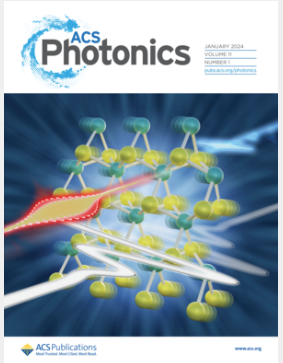Integrated Opto-Synaptic IGZO Transistors for Image Recognition Fabricated at Room Temperature
IF 6.5
1区 物理与天体物理
Q1 MATERIALS SCIENCE, MULTIDISCIPLINARY
引用次数: 0
Abstract
At room temperature, high-κ HfLaO is adopted as the gate dielectric to fabricate amorphous InGaZnO (a-IGZO) optical synaptic thin-film transistors (TFTs), for which plasma treatments are conducted on the HfLaO dielectric in O2 and a-IGZO in Ar, respectively, namely, OPT/APT-TFTs. Consequently, high-performance a-IGZO TFTs are obtained with a high carrier mobility of 20.8 cm2/V·s, a high Ion/Ioff ratio of 3.2 × 106, and a small subthreshold swing (SS) of 0.25 V/dec. As compared to the pristine TFTs, the photocurrent of the OPT/APT-TFTs under a 365 nm ultraviolet (UV) light is significantly raised three times up to 1.4 μA. Meanwhile, the current decay percentage after irradiation removal is reduced from 98% down to 36% within 60 s, indicating an enhanced persistent-photoconductivity (PPC) effect. Accordingly, various optical synaptic plasticities are obtained based on which a simulated neuronal network with a high 93.22% accuracy is achieved to recognize MNIST handwritten digits. Moreover, both neurotransmitter and neuromodulator behaviors are concurrently emulated in a single device through exploiting the native three-terminal structure of the TFT. Importantly, an artificial visual nervous system is successfully constructed by integrating the a-IGZO optoelectronic TFTs for image recognition.

在室温下制造出用于图像识别的集成光突触 IGZO 晶体管
本文章由计算机程序翻译,如有差异,请以英文原文为准。
求助全文
约1分钟内获得全文
求助全文
来源期刊

ACS Photonics
NANOSCIENCE & NANOTECHNOLOGY-MATERIALS SCIENCE, MULTIDISCIPLINARY
CiteScore
11.90
自引率
5.70%
发文量
438
审稿时长
2.3 months
期刊介绍:
Published as soon as accepted and summarized in monthly issues, ACS Photonics will publish Research Articles, Letters, Perspectives, and Reviews, to encompass the full scope of published research in this field.
 求助内容:
求助内容: 应助结果提醒方式:
应助结果提醒方式:


